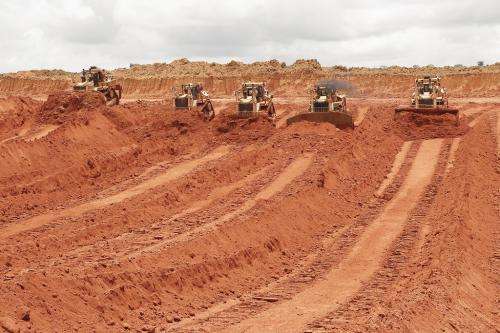Seed workshop bears conservation fruits

Researchers have pooled their expertise to investigate factors that affect the survival of seeds, resulting in a framework that can help both eradicate weeds and maintain desirable plant populations.
The study is the first comprehensive review to explore the mechanistic seed and environmental factors that influence seed persistence and synthesise them into a model to aid future predictions in a range of environments.
University of Western Australia School of Plant Biology Associate Professor Michael Renton says the collaboration was born out of a lack of a comprehensive review integrating existing knowledge.
"We organised a workshop that included some world authorities, to bring all our different areas of expertise together, and this review was the result," A/Prof Renton says.
"Each researcher specialises in seed persistence, but in different ways, such as mathematical modelling, seed biochemistry, seed ecology and practical management."
Over almost five years, researchers explored seed, species and environmental factors that contribute to seed persistence, incorporating physiological, biochemical and ecological perspectives.
Seed persistence allows a species, population or genotype to survive long after the death of parent plants, thus distributing genetic diversity through time.
Researchers found seed dormancy, longevity, and defence characteristics all contribute to a seed's ability to resist exiting the soil seed bank.
They also concluded abiotic and biotic conditions pre- and post-dispersal can alter seed dormancy, longevity and germination characteristics.
Understanding seed persistence is essential for helping design effective weed management programs.
When invasive weeds need to be eradicated, the persistence of the weed seeds strongly impacts how long weed control needs to be maintained.
When the aim is for plant species to persist, there may be things that can be done in the intervening years to encourage survival and to work towards restoring and conserving the species.
"On a mine site, for example, we may remove the top soil, and store it while mining occurs," A/Prof Renton says.
"If we can understand and improve the persistence of the species in the stored top soil, then when we restore the mine site and replace the top soil, we may have many more of the native species germinating and re-establishing."
A/Professor Renton says the framework will be useful in the practical management of weeds and plants.
"We hope it can be a first stop for people interested in this topic and point them in the right direction to find more specialised reports," A/Professor Renton says.
More information: "The ecophysiology of seed persistence: a mechanistic view of the journey to germination or demise." Long RL, et al. Biol Rev Camb Philos Soc. 2014 Mar 12. DOI: 10.1111/brv.12095. [Epub ahead of print]
Provided by Science Network WA










.jpg)




